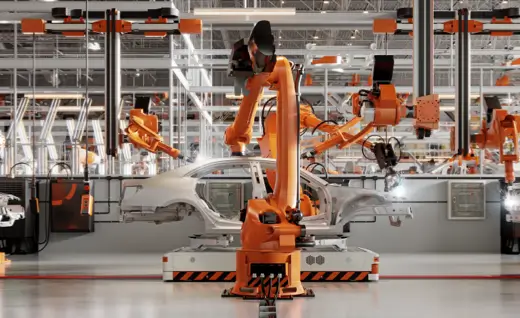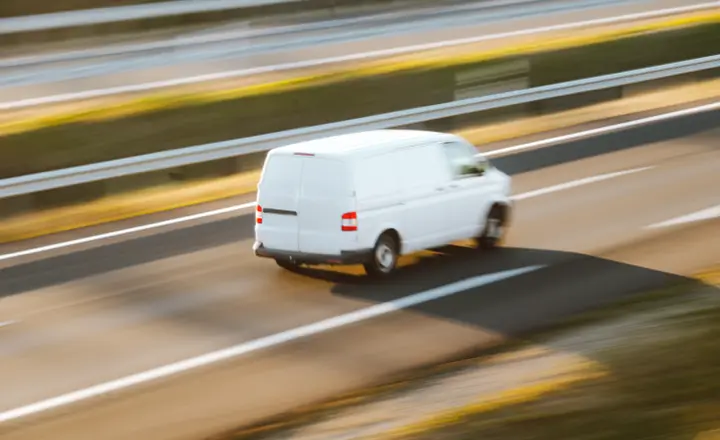The automotive industry's foundation rests on a massive, intricate supply chain that demands absolute precision…
June 25, 2025
Reverse Logistics Solutions for the Energy Sector
The energy sector depends on highly specialised, high-value equipment to maintain operations. As components like transformers, turbines, solar panels and batteries reach the end of their service life or require repairs, energy companies must efficiently manage the reverse logistics process to minimise downtime and ensure regulatory compliance.

Reverse logistics for the energy sector is uniquely complex, but with the right logistics partner, manageable.
Key challenges in energy sector reverse logistics
Managing complex, high-value returns
Energy infrastructure relies on specialised, high-value components, which makes reverse logistics demanding. Transformers, wind turbines, and solar panels require careful handling to prevent damage and maximise their lifespan. Testing and refurbishment are crucial steps in the reverse distribution process to ensure that valuable components can be safely reintegrated into operations. Companies that lack efficient reverse logistics solutions risk losing significant value from their returned assets.
Minimising downtime and ensuring continuity
Any delays in returning faulty or unneeded parts, or processing replacements can lead to huge disruptions in production. Efficient reverse logistics operations, like real-time tracking and predictive maintenance, can help companies reduce downtime. Streamlining supply chain efficiency helps businesses keep their operations running smoothly so they can maintain customer satisfaction.
Sustainability and circular economy pressures
The renewable energy industry faces growing expectations to adopt circular economy principles. Governments, regulators and consumers are pushing for sustainable supply chain management, where components are refurbished, repurposed, or recycled instead of being disposed of. Many companies are investing in closed-loop green logistics to reduce waste, extend the lifespan of critical materials, and lower carbon emissions.
Handling hazardous materials and compliance
Many components used in the renewable energy sector contain hazardous materials. Transporting and disposing of these materials requires strict adherence to environmental regulations and safety laws. Non-compliance can result in heavy fines and legal action, which in turn can lead to massive reputational damage. Energy companies must work with industry experts and logistics providers who understand hazardous material regulations and can properly manage these types of materials.
How leading energy companies are solving reverse logistics challenges
Real-time tracking and visibility
Leading energy companies are leveraging IoT and automation-driven platforms to track returned components, assess their condition and predict refurbishment needs. Real-time tracking provides full visibility over reverse logistics operations, allowing companies to plan replacements, reduce waste, and improve operational efficiency.
Advanced repair and refurbishment networks
To maximise asset lifespan, companies are setting up dedicated repair and refurbishment facilities. These centres allow energy businesses to restore high-value components, ensuring they are returned to service quickly and cost-effectively. Investing in these facilities enhances supply chain resilience and helps companies meet environmental sustainability goals.
Strategic partnerships with 3PLs
Outsourcing reverse logistics operations to third-party logistics (3PL) providers ensures compliance with environmental regulations and energy sector requirements. Logistics specialists like Carousel provide tailored solutions that streamline the reverse logistics system and reduce operational costs.
Sustainable disposal and circular economy initiatives
Forward-thinking renewable energy sector businesses are developing closed-loop systems where components are repaired, reused, or recycled instead of being sent to landfills. By embracing sustainable practices, these companies can comply with regulatory requirements while reducing their environmental impact.
The business case for optimised reverse logistics in energy
By investing in efficient management and sustainable supply chain solutions, energy companies can:
- Reduce operational costs by recovering value from returned assets and minimising waste.
- Improve uptime with fast, efficient returns and replacements, ensuring continued energy production.
- Meet regulatory and sustainability requirements with compliant, eco-friendly waste management processes that lower carbon emissions.
- Enhance customer and partner relationships by providing a seamless reverse logistics system and maintaining customer loyalty.
Are you maximising the value of your reverse logistics?
At Carousel, we provide custom reverse logistics solutions for the energy sector, helping businesses streamline operations, reduce costs, and enhance sustainability. Contact us today to learn how we can optimise your reverse logistics process and strengthen your supply chain.



